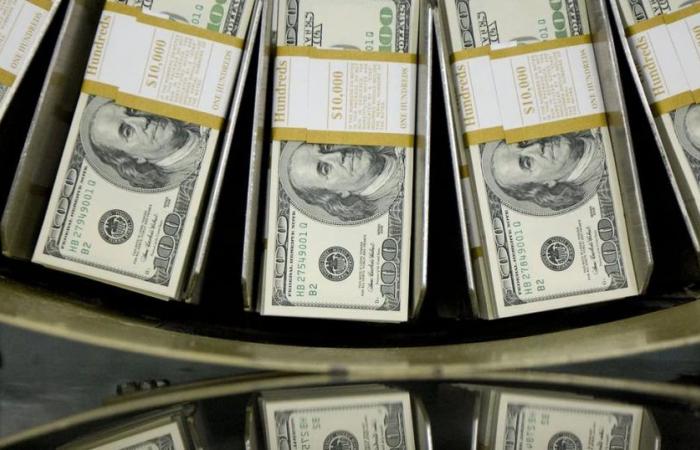
Although the amount traded remained at an important level of USD 404.2 million in the cash segment, the Central Bank returned to selling foreign currency in the market this Friday, ending with a Negative balance of USD 38 million for its exchange participation.
Thus, the entity ended the week with a net sales balance of USD 109 million, after obtaining a negative result in three of the five operating sessions. In this sense, the balance of June showed a sales balance of USD 84 million For the Central Bank, this was the first month with sales since October 2023. The agency had to cover the lack of supply in nine of the 17 operating sessions of the period.
Meanwhile, the Bookings international ended with a decrease on the day from USD 732 million, to USD 29,016 million. The decline in reserves also has an accounting basis, which is recorded at the end of each month and is offset in the first round of the following month, a movement that also occurred in previous months.
The Central Bank has accumulated net purchases in the foreign exchange market for USD 17,202 million since December 11 of last year, when Javier Milei’s government took office. At the same time, the stock of international reserves improved by USD 7,807 million or 36.8%, from USD 21,209 million on December 7, 2023.
“This year you have a much better harvest than last year but with lower prices, you had more dollars in sight than last year and you ended June almost tied: one day you buy and the next you sell,” explained the economist. Marina Dal Poggettodirector of the consulting firm EcoGo. “The economy is starting to demand more dollars for a number of reasons. One is that the signal to dismantle stocks is moderating because they have already been dismantled and because there is beginning to be an incipient recovery of the economy and because you are in a scenario of very low interest rates,” she explained. And she illustrated: “You ran out of gas when you had not even reached the third quarter and the million-dollar question is how do you get out of here?”
President Javier Milei declared to LN+ that “the zero deficit stage has already passed, now we are going to the zero emission stage, now the change of monetary regime is coming.” In that sense, the President made a relevant clarification: “We point out that what is called the broad monetary base does not vary more. The fiscal tap is closed, we have largely eliminated remunerated liabilities, inside the accounts of the Central Bank there is an adjustment of 9 points of GDP. And the idea is that the broad monetary base and the simple monetary base become more similar every day, until the remunerated liabilities disappear completely.”
“I don’t understand my economist colleagues who praise the ‘largest fiscal and monetary adjustment in history’ and five minutes later say that we cannot get out of the trap without hyperinflation. It’s one or the other. The fear of floating can sink us,” said the economist and national deputy. Luciano Laspinadirector of the Center for Studies for Progress.
The Economist Gustavo Ber He said that “operators are closely following the dynamics of the BCRA’s purchases, with June interrupting the streak of strong purchases that had been going on since December, awaiting possible strategies aimed at improving this equation. It happens that not only would we face a second semester where the supply of foreign currency is reduced, but imports and energy payments, among others, are on the rise, which could open a period of greater tensions on the reserves.”
“These concerns are being reflected in the rearrangement of financial dollars, which continue to be sustained by greater dollarization and thus the ‘gap’ is already close to 50%, a level that will require short-term decisions to end.” to prevent it from continuing to expand and generate not only eventual distortions but also a deterioration in the expectations of economic agents,” continued the head of Estudio Ber.





